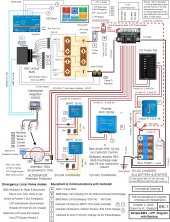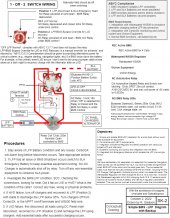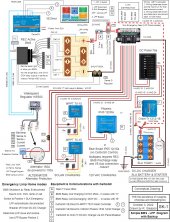Goboatingnow
Solar Enthusiast
- Joined
- Jul 3, 2022
- Messages
- 1,325
Remember if every wet Wednesday you’re finding you have to switch in the SLA something has gone badly wrong.I will add a note to the manual Switch Diagram SK-2, "Engine & Alternator Off when switching".
I think perhaps I should consider powering a few of the essential and low power loads from the SLA in the rare event a BMS/LFP shutdown occurs:
#1 & #2 could be easily done by connecting to a small 6 fuse panel powered from the SLA.
- Nav lights (masthead) - separate dedicated switches located on the DC panel
- Bilge pumps - separate small panel for fuse and switches
- Cabin lights - currently uses DC circuit breaker
- Instruments - currently uses DC circuit breaker (also part of nmea2k and nav system)
#3 & #4 are somewhat problematical because the Cabin lights need a switch, and the instruments are really part of the nav system.
Perhaps moving the Cabin lights to SLA are a priority.
Add a note somewhere to disconnect the Solar panels at the M4 connectors before disconnecting from the batteries.
Hence given it’s a system only designed to be used occasionally and manually I see no point in spending money to direct the SLA at particular loads. After all you can just selectively trip them out manually at the panel.
Hence just power up the boat completely from the SLA. This is the simplest electrically.
Then depending on whether you are facing a long period of “ bypass” or a short period you can decide to selectively manually kill certain loads.
It’s a mistake to complex engineer a costly system that almost never gets used.






